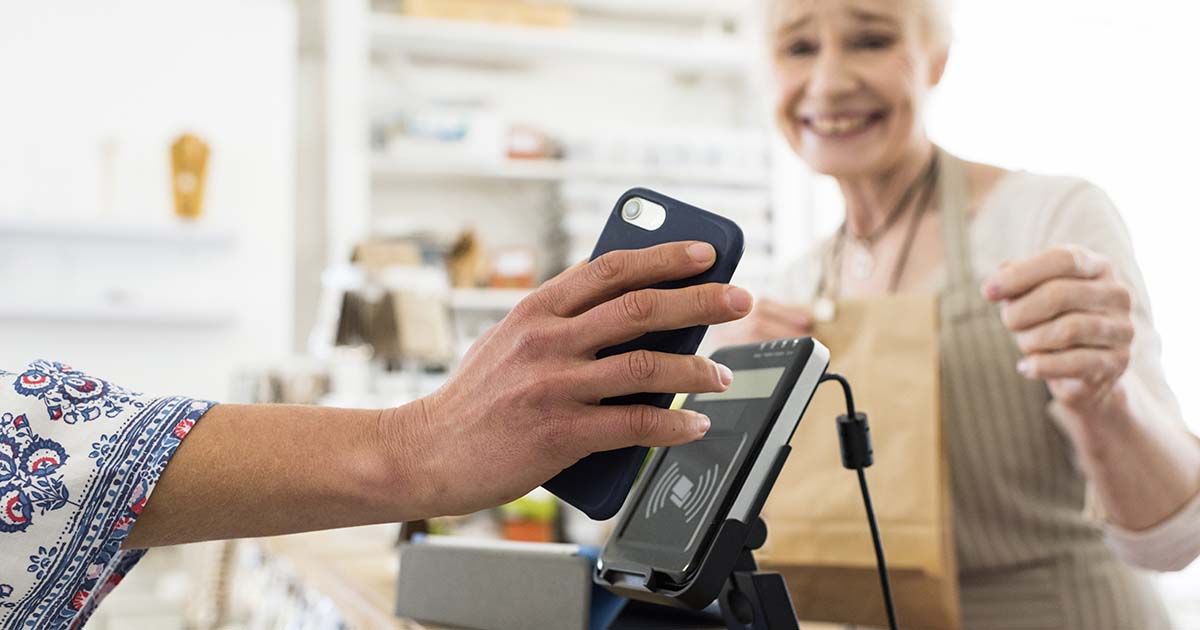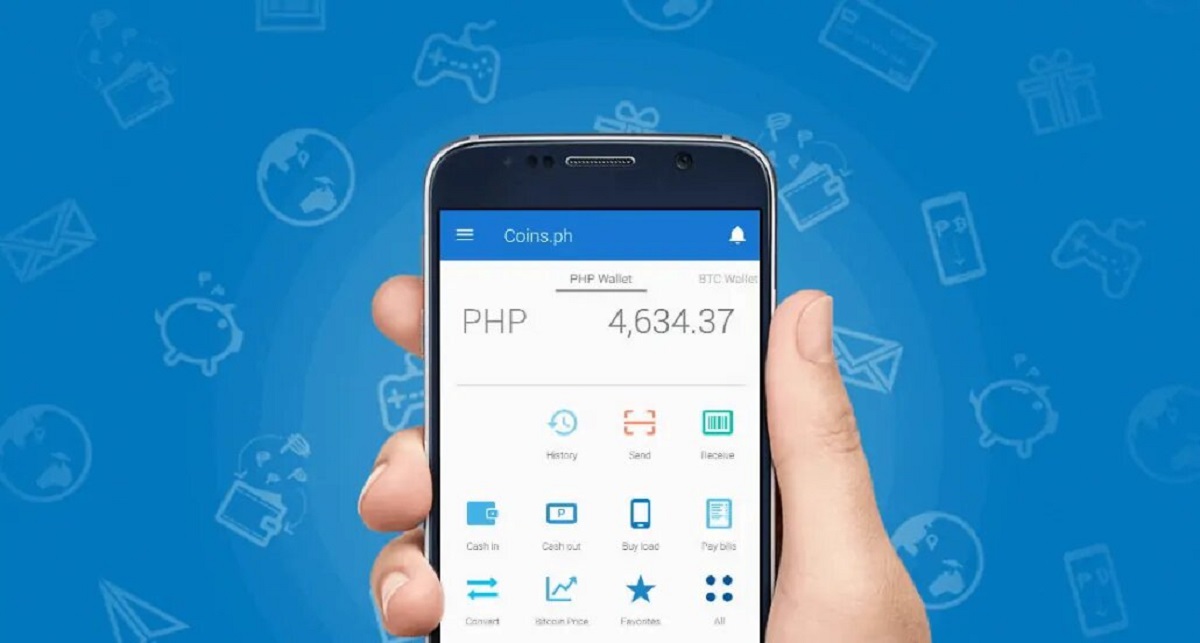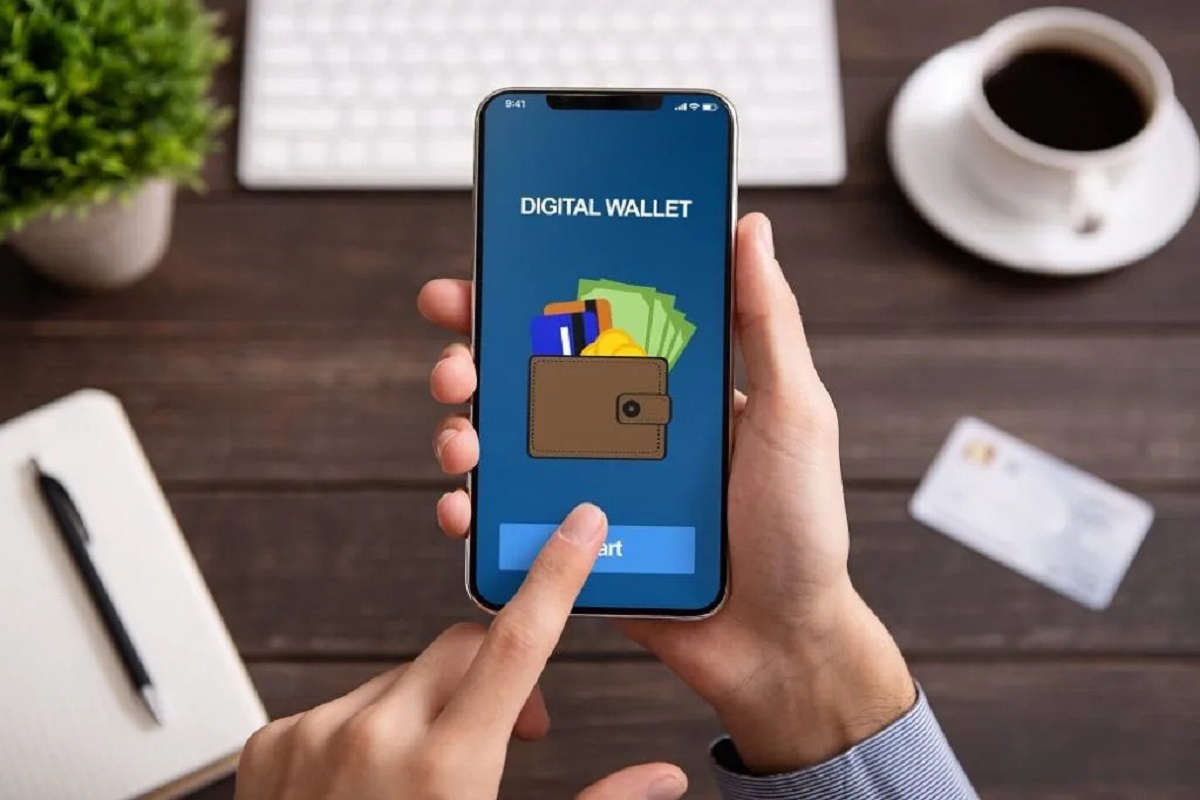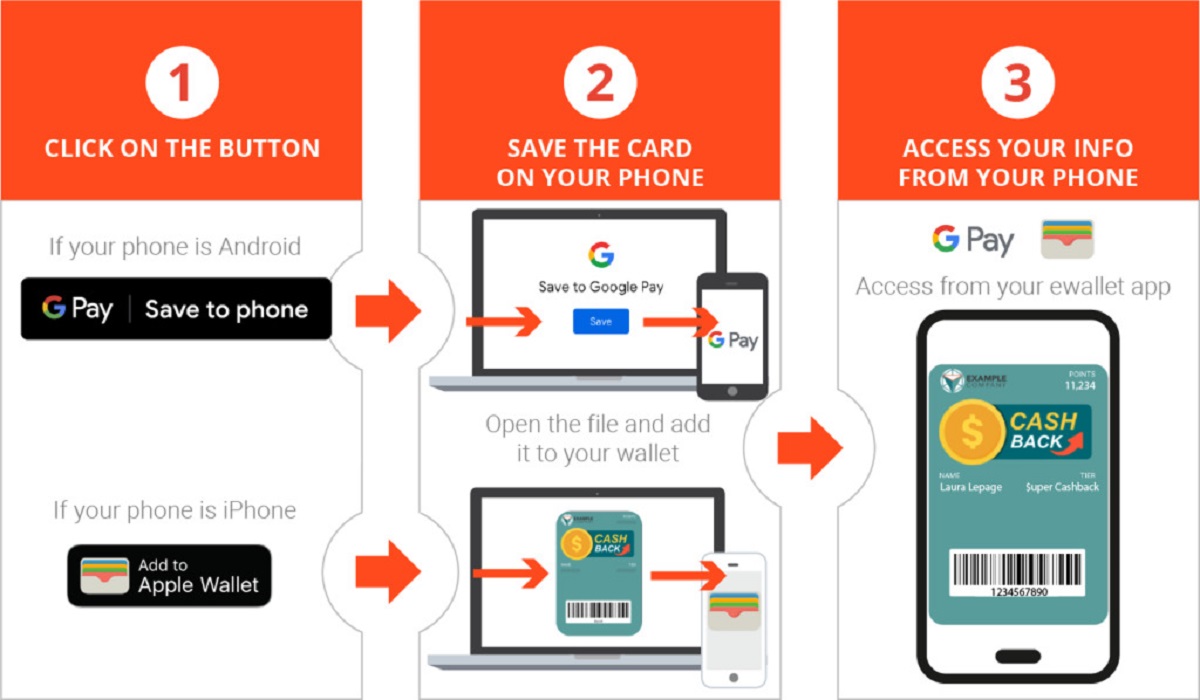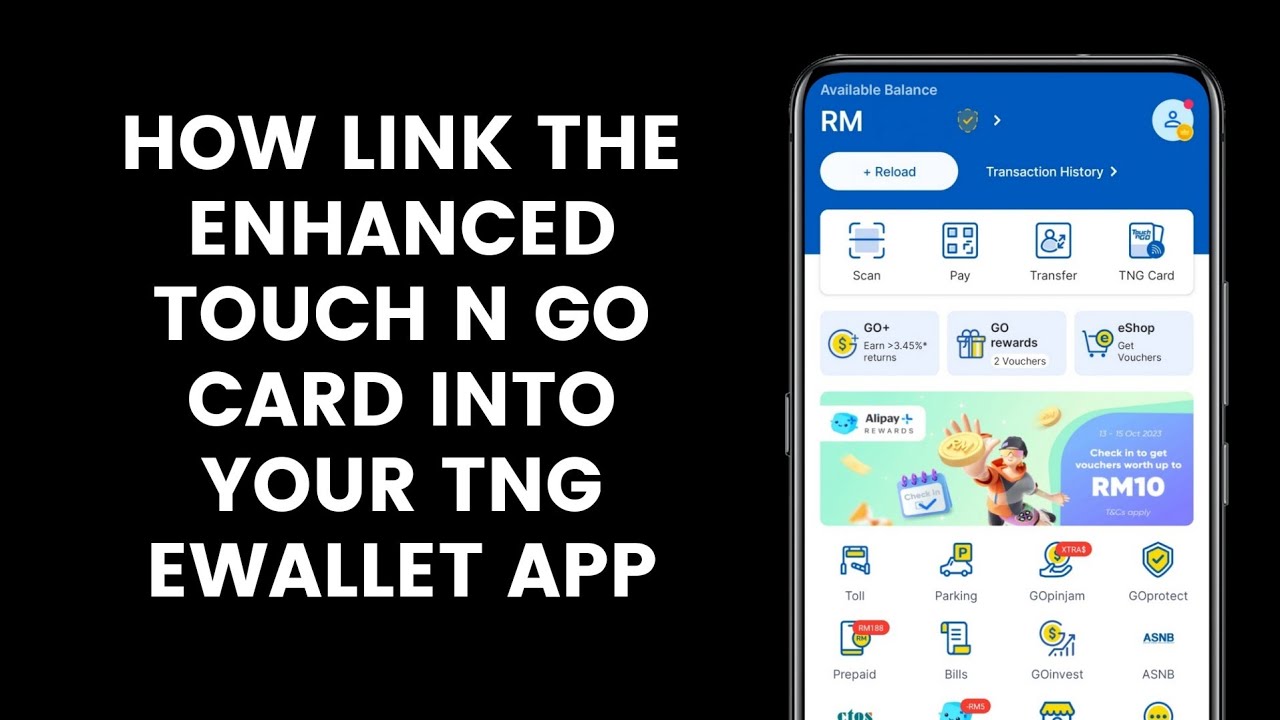Introduction
With the rapid advancement of technology and the increasing popularity of online transactions, the use of e-wallets has become widespread. E-wallets, also known as digital wallets, offer a convenient and secure way to make payments and store financial information. However, concerns about the security of e-wallets have also arisen.
This article aims to explore the security measures implemented by e-wallet providers to protect user data and transactions. We will delve into the benefits of using e-wallets, as well as the potential security risks that users should be aware of. By understanding the security measures in place, users can make informed decisions when using e-wallets for their financial transactions.
Overall, e-wallets have revolutionized the way we handle transactions, making them quicker, easier, and more convenient. Gone are the days of carrying around bulky wallets or worrying about the security of physical cash. E-wallets allow users to store their payment information securely on their mobile devices or online platforms, eliminating the need to input card details for each purchase.
However, amidst the convenience and efficiency offered by e-wallets, concerns about security risks have also emerged. Users want to be assured that their personal information, sensitive financial data, and transactions are safeguarded against potential threats such as hacking, identity theft, or fraudulent activities.
In the following sections, we will examine the security measures implemented by e-wallet providers to protect user data and transactions. We will discuss Secure Sockets Layer (SSL) encryption, password protection, two-factor authentication, fraud detection measures, secure payment gateways, biometric authentication, and user responsibilities in maintaining e-wallet security.
By understanding these security measures and taking necessary precautions, users can confidently enjoy the benefits of using e-wallets while minimizing the risks associated with online transactions. Let’s dive into the details and explore the security features that contribute to the safety and integrity of e-wallet systems.
Overview of E-wallets
E-wallets, or electronic wallets, are digital versions of traditional wallets that allow individuals to make online transactions securely and conveniently. It eliminates the need for physical cards or cash by providing a platform for storing and managing users’ financial information.
There are two main types of e-wallets: software-based and cloud-based. Software-based e-wallets are applications that users can download and install on their smartphones, tablets, or computers. Cloud-based e-wallets, on the other hand, are stored on secure servers and can be accessed through various devices with an internet connection.
E-wallets work by securely storing users’ payment information, such as credit or debit card details, bank account information, or even cryptocurrencies like Bitcoin. When making a transaction, users can select their preferred payment method within the e-wallet app or platform, and the necessary information is securely transferred to complete the transaction.
One of the primary advantages of using e-wallets is the convenience it offers. With an e-wallet, users can make transactions anytime, anywhere, as long as they have an internet connection and their mobile device or computer. This eliminates the need to carry physical cards or cash, streamlining the payment process and reducing the risk of losing or misplacing valuable items.
Moreover, e-wallets often provide additional features like loyalty program integration, allowing users to earn rewards or receive discounts when using their e-wallets for purchases. They also enable users to easily split bills with friends, make peer-to-peer transfers, and keep track of their expenses, providing a comprehensive financial management solution in one convenient application.
It is important to note that each e-wallet provider may offer different features and benefits, so it is crucial for users to research and choose a reputable and trusted e-wallet provider that aligns with their specific needs and preferences.
In the next section, we will discuss the benefits of using e-wallets and how they have transformed the way we handle transactions in the digital age.
Benefits of Using E-wallets
E-wallets have revolutionized the way we handle transactions, offering a multitude of benefits that have transformed the digital payment landscape. Let’s explore some of the key advantages of using e-wallets:
- Convenience: E-wallets provide a convenient payment method that allows users to make transactions anytime, anywhere. With just a few taps on their mobile devices or clicks on their computers, users can quickly and securely complete purchases without the hassle of carrying physical cash or cards.
- Reduced Risk of Loss or Theft: Physical wallets are susceptible to loss or theft. With e-wallets, users no longer need to worry about misplacing their wallets or having their cards stolen. All payment information is securely stored within the e-wallet app or platform, reducing the risk of financial loss due to stolen cards or cash.
- Loyalty Programs and Rewards: Many e-wallets integrate with loyalty programs, allowing users to earn rewards or receive discounts when making purchases. This incentivizes users to use their e-wallets and provides additional value for their transactions.
- Quick and Seamless Transactions: E-wallets streamline the payment process, making transactions quick and seamless. Users can complete purchases with just a few taps, eliminating the need to manually input card details for each transaction.
- Peer-to-Peer Transfers: E-wallets enable easy peer-to-peer transfers, allowing users to send and receive money from friends and family members instantly. Whether splitting a bill at a restaurant or sending money to a loved one, e-wallets facilitate quick and convenient transfers.
- Financial Management: Many e-wallets offer features that help users manage their finances effectively. Users can track their expenses, set budgets, and receive notifications on their spending habits, providing insights into their financial health.
Additionally, e-wallets have gained popularity in the e-commerce industry, as they offer a secure payment method for online purchases. Customers can make transactions on various online platforms with ease, without the need to constantly input payment information.
Overall, the benefits of using e-wallets include enhanced convenience, reduced risk of loss or theft, integration with loyalty programs, quick and seamless transactions, peer-to-peer transfers, and financial management tools. These advantages have made e-wallets an attractive choice for individuals seeking secure and hassle-free digital payment solutions.
In the next section, we will explore the potential security risks associated with e-wallets and delve into the security measures implemented to mitigate these risks.
Potential Security Risks
While e-wallets offer numerous benefits, it is essential to be aware of potential security risks associated with this technology. By understanding these risks, users can take appropriate measures to protect their financial information and transactions. Let’s explore some common security risks associated with e-wallets:
- Device Vulnerability: Mobile devices or computers used to access e-wallets may be vulnerable to malware, viruses, or hacking attempts. If a user’s device is compromised, it could potentially lead to unauthorized access to their e-wallet and sensitive financial information.
- Phishing and Social Engineering: Cybercriminals may employ phishing techniques such as fraudulent emails, text messages, or websites that mimic legitimate e-wallet platforms, aiming to trick users into providing their login credentials or other personal information.
- Identity Theft: If an e-wallet account is compromised, sensitive personal information such as names, contact details, or even social security numbers can be exposed, putting users at risk of identity theft.
- Insecure Networks: Public Wi-Fi networks or unsecured internet connections can expose e-wallet transactions to potential interception by attackers. It is crucial to ensure that transactions are conducted on secure networks to mitigate this risk.
- Lost or Stolen Devices: If a device containing an e-wallet app is lost or stolen, unauthorized access to the e-wallet and its associated financial information can occur. It is important to implement security measures such as device locks, password protection, or remote wipe capabilities.
E-wallet providers are well aware of these risks and have implemented various security measures to protect user data and transactions. In the next sections, we will discuss the specific security measures employed by e-wallet providers to safeguard users’ financial information from potential threats.
By understanding the potential security risks, users can take proactive steps to enhance the security of their e-wallets and reduce the chances of falling victim to fraudulent activities. In the following sections, we will explore the security measures implemented by e-wallet providers to mitigate these risks and protect user information and transactions.
SSL Encryption
One of the fundamental security measures employed by e-wallet providers is the use of Secure Sockets Layer (SSL) encryption. SSL is a cryptographic protocol that ensures the secure transmission of data between a user’s device and the e-wallet server. It establishes a secure and encrypted connection, protecting sensitive information from interception or unauthorized access.
When a user initiates a transaction or accesses their e-wallet, SSL encryption encrypts the data before it is transmitted over the internet. This encryption process scrambles the data in a way that can only be decrypted by the intended recipient, ensuring that any sensitive information transmitted remains confidential and protected.
SSL encryption provides several layers of security for e-wallet transactions. It verifies the authenticity of the e-wallet server, ensuring that users are communicating with a trusted and legitimate service provider. Additionally, SSL encryption protects against eavesdropping, where attackers attempt to intercept and capture data as it is transmitted over the internet.
E-wallet providers obtain SSL certificates from trusted certificate authorities, which serve as digital passports that validate the authenticity of the e-wallet’s website or platform. Users can identify the presence of SSL encryption by looking for the “https” prefix in the website URL, accompanied by a padlock symbol in the browser’s address bar. This indicates that the connection is encrypted and secure.
SSL encryption is crucial in safeguarding users’ sensitive information, such as payment card details, usernames, passwords, and other personal data. It provides users with the confidence and assurance that their transactions and interactions with the e-wallet platform are protected from potential interception or tampering.
E-wallet providers prioritize the implementation of SSL encryption to create a secure environment for users to confidently conduct their financial transactions. In the next sections, we will explore additional security measures that further enhance the protection and integrity of e-wallet systems.
Password Protection
Password protection is a crucial security measure implemented by e-wallet providers to prevent unauthorized access to user accounts and ensure the confidentiality of sensitive financial information. When creating an e-wallet account, users are required to set a strong and unique password that provides an additional layer of protection against potential threats.
Here are some best practices for effective password protection:
- Strong Password Requirements: E-wallet providers often enforce password requirements to ensure that users create strong passwords. These requirements typically include a minimum length, a combination of alphanumeric characters, uppercase and lowercase letters, and special symbols.
- Unique Password: It is essential to use a unique password for each online platform or account, including e-wallets. Reusing passwords across multiple accounts can lead to significant security vulnerabilities. If one account is compromised, all other accounts using the same password can be easily accessed.
- Password Managers: Password managers are tools that securely store and manage passwords for various online platforms. Using a reputable password manager can help generate and store complex passwords, making it easier to maintain unique and strong passwords for e-wallets and other accounts.
- Password Update Frequency: Regularly updating passwords is an important practice to minimize the risk of a compromised account. It is recommended to change passwords every 90 days or sooner, especially if there are concerns about potential security breaches.
- Multi-Factor Authentication (MFA): E-wallet providers often offer the option of enabling multi-factor authentication, which adds an extra layer of security. This typically involves a combination of something the user knows (password), something the user possesses (smartphone), or something inherent to the user (biometrics).
E-wallet users are encouraged to follow these password protection best practices to reduce the risk of unauthorized access to their accounts and ensure the security of their financial information. By using strong and unique passwords, regularly updating them, and employing additional authentication methods, users can significantly enhance the protection of their e-wallet accounts.
In the next sections, we will explore other security measures, such as two-factor authentication, fraud detection, secure payment gateways, and biometric authentication, that further fortify e-wallet systems against potential threats.
Two-Factor Authentication
Two-factor authentication (2FA) is a robust security measure implemented by e-wallet providers to further enhance the protection of user accounts and prevent unauthorized access. 2FA adds an extra layer of security by requiring users to provide two different types of identification factors to access their e-wallet accounts.
The first factor is typically something the user knows, such as their password or a personal identification number (PIN). This is the traditional authentication method used to verify the user’s identity. The second factor is something the user possesses, such as a mobile device or token that generates a unique verification code.
When 2FA is enabled, users need to enter their password or PIN, and then provide the verification code generated by the second factor, typically through a mobile app or SMS. This additional step ensures that even if an unauthorized user gains access to the user’s password, they will not be able to access the account without the second factor.
The use of 2FA significantly improves the security of e-wallet accounts, as it adds an extra barrier against potential attackers. Even if a user’s password is compromised, the second factor acts as a safeguard, making it much more difficult for unauthorized individuals to gain access to the user’s e-wallet and sensitive financial information.
E-wallet providers generally offer multiple options for the second factor, such as time-based one-time passwords (TOTP), push notifications, or physical security keys. Users should choose the option that best suits their preferences and ensures the highest level of security.
Enabling 2FA is an important step in protecting e-wallet accounts. It provides an additional layer of defense against unauthorized access and significantly reduces the risk of financial loss or data breaches. Users are strongly encouraged to enable 2FA wherever possible and follow the recommended best practices provided by their e-wallet provider.
In the following sections, we will discuss other security measures, including fraud detection, secure payment gateways, biometric authentication, and user responsibilities in maintaining e-wallet security.
Fraud Detection Measures
E-wallet providers employ sophisticated fraud detection measures to proactively identify and prevent fraudulent activities within their platforms. These measures are designed to detect suspicious transactions, unusual account behavior, or other indicators of potential fraud.
Here are some commonly implemented fraud detection measures used by e-wallet providers:
- Behavioral Analysis: E-wallet platforms utilize advanced algorithms to analyze user behavior patterns. By monitoring transaction history, spending patterns, and location data, these systems can detect anomalies or deviations from normal user behavior that may indicate the presence of fraudulent activities.
- Transaction Monitoring: Real-time monitoring of transactions plays a crucial role in fraud detection. E-wallet providers employ complex systems that analyze various transaction parameters, such as transaction amounts, frequency, and recipient details, to identify potentially fraudulent activity. Unusual patterns or inconsistencies may trigger further investigation or prompt additional security measures.
- Geolocation Tracking: Many e-wallet providers use geolocation data to cross-reference transaction locations with the user’s current location. If a transaction occurs in a location distant from the user’s usual location, it may indicate potential fraud, prompting the system to flag the transaction or require additional authentication.
- Machine Learning and Artificial Intelligence: E-wallet providers leverage machine learning and AI algorithms to continuously learn from user data and detect emerging fraud patterns. These systems can enhance fraud detection accuracy over time by adapting to new trends and evolving fraud techniques.
- Account Activity Monitoring: Suspicious account activity, such as multiple failed login attempts, password changes, or unusual login locations, can trigger security alerts. E-wallet providers monitor these activities to proactively detect and address potential unauthorized access attempts.
The implementation of these fraud detection measures helps protect e-wallet users from fraudulent activities and unauthorized access to their funds. However, it is important to note that no system is foolproof, and users should also remain vigilant and take necessary precautions to enhance their own security.
In the next sections, we will explore other security measures, such as secure payment gateways, biometric authentication, and user responsibilities in maintaining e-wallet security.
Secure Payment Gateways
Secure payment gateways are an integral part of e-wallet systems, serving as the bridge between the e-wallet platform, merchants, and banks. These gateways ensure the secure transfer of payment information during online transactions.
Here’s how secure payment gateways work:
- Encryption: When a user initiates a transaction through an e-wallet, the payment information is encrypted before it is transmitted to the secure payment gateway. This encryption ensures that the sensitive data remains confidential and protected from unauthorized access during the transfer process.
- Data Validation: Secure payment gateways validate the payment data entered by the user to ensure its accuracy and completeness. This includes verifying the card number, expiration date, CVV code, and any additional authentication factors required by the card issuer.
- Tokenization: To further enhance security, some payment gateways use tokenization. Tokenization replaces the user’s sensitive payment information with a unique identifier called a token. This token is used to process the transaction, while the actual payment information is securely stored by the payment gateway provider. By using tokens, e-wallets can reduce the risk of exposure of sensitive payment information during transaction processing.
- Payment Authorization: Once the payment information has been validated and tokenized, the secure payment gateway contacts the respective card issuer or bank to authorize the transaction. The issuer or bank verifies the authenticity of the payment details and approves or declines the transaction based on preset security protocols and user account availability.
- Transaction Confirmation: Upon receiving authorization from the card issuer or bank, the secure payment gateway communicates the confirmation back to the e-wallet platform and completes the transaction. The user and merchant receive confirmation of the successful transaction, ensuring transparency and peace of mind for both parties involved.
Secure payment gateways play a crucial role in ensuring the security and integrity of e-wallet transactions. By employing encryption, data validation, tokenization, payment authorization, and transaction confirmation, they provide a secure environment for users to make online purchases and payments.
E-wallet providers collaborate with trusted payment gateway partners to establish secure connections and protocols that comply with industry standards and regulations. By doing so, they prioritize the protection and privacy of their users’ financial information.
In the next section, we will explore biometric authentication as an additional security measure offered by e-wallet providers to enhance user account security and prevent unauthorized access.
Biometric Authentication
Biometric authentication is a cutting-edge security measure that many e-wallet providers offer to enhance user account security and prevent unauthorized access. Biometric authentication uses unique physical or behavioral characteristics to verify a user’s identity, offering a highly secure and convenient method of authentication.
Here are some common types of biometric authentication used in e-wallet systems:
- Fingerprint Recognition: Fingerprint authentication is one of the most prevalent forms of biometric authentication. Users can register their fingerprints within the e-wallet app, and subsequent logins or transactions require a fingerprint scan for verification.
- Facial Recognition: Facial recognition technology analyzes individual facial features, such as the arrangement of eyes, nose, and mouth, to authenticate a user’s identity. This method uses the device’s front-facing camera to capture and compare facial data for verification.
- Iris Scanning: Iris scanning measures the unique patterns within the colored part of the eye (iris) and compares it with the registered iris data for identity validation. This method offers a high level of accuracy and security.
- Voice Recognition: Voice recognition analyzes vocal characteristics, such as tone, pitch, and cadence, to verify a user’s identity. Users speak a specific phrase or word, and the e-wallet system compares it to the registered voice pattern for authentication.
- Behavioral Biometrics: Behavioral biometrics analyze unique patterns in user behavior, such as typing rhythm, swipe gestures, or touchscreen interaction, to verify identity. This method assesses the consistency and specific characteristics of user behavior as a means of authentication.
Biometric authentication provides several advantages over traditional authentication methods:
- Accuracy and Security: Biometric authentication relies on unique physical or behavioral characteristics that are difficult to replicate, providing a high level of accuracy and security.
- Convenience: Biometric authentication eliminates the need to remember and enter complex passwords or PINs, offering a seamless and user-friendly experience.
- Non-repudiation: Biometric authentication provides non-repudiation, meaning that once a user’s biometric data is associated with their account, it becomes difficult for them to deny their involvement in a transaction or activity.
- Enhanced Fraud Prevention: Biometric authentication makes it significantly more challenging for unauthorized individuals to gain access to e-wallet accounts, as they would need to replicate the user’s unique biometric characteristics.
Incorporating biometric authentication adds an extra layer of security to e-wallet systems, increasing user confidence and reducing the risk of unauthorized access or fraudulent activities. E-wallet providers leverage advanced biometric technologies to ensure the accuracy and integrity of the authentication process.
In the following section, we will discuss the importance of user responsibilities in maintaining e-wallet security, as a collaborative effort is crucial for a secure e-wallet experience.
User Responsibility in E-wallet Security
While e-wallet providers implement robust security measures, users also have a crucial role to play in maintaining the security of their e-wallet accounts. By practicing good security habits and following best practices, users can significantly reduce the risk of unauthorized access, fraud, or data breaches. Here are some important user responsibilities in e-wallet security:
- Strong Passwords: Users should create strong, unique passwords for their e-wallet accounts and avoid using easily guessable or common passwords. It is crucial to regularly update passwords and avoid sharing them with others.
- Multi-Factor Authentication (MFA): Enabling and using multi-factor authentication adds an extra layer of security to e-wallet accounts. Users should take advantage of this feature and ensure they follow the necessary steps to complete the authentication process.
- Security Updates: Users should promptly install any updates or patches provided by the e-wallet provider’s app or platform. These updates often include important security enhancements and bug fixes that help protect against the latest vulnerabilities.
- Secure Network Usage: Users should be cautious when accessing their e-wallet accounts on public Wi-Fi networks or unsecured internet connections. It is advisable to use secure and trusted networks to minimize the risk of interception or unauthorized access to account information.
- Device Security: Keeping the device used for e-wallet transactions secure is essential. Users should regularly update their device’s operating system, enable device lock features, and use reputable security software to protect against malware or viruses.
- Account Monitoring: Users should regularly monitor their e-wallet account activity and be vigilant for any suspicious transactions or unauthorized access. Reporting any suspicious activities to the e-wallet provider promptly can help mitigate potential risks.
- Phishing Awareness: Users should exercise caution when responding to emails, messages, or calls requesting personal or financial information. It is essential to verify the authenticity of such requests and avoid clicking on suspicious links or providing sensitive information to unknown sources.
- Secure Communication: When communicating with the e-wallet provider’s support team or customer service, users should ensure that they are using secure and verified communication channels. This helps prevent phishing attempts or impersonation by malicious actors.
By taking these user responsibilities seriously and practicing good security habits, users can significantly enhance the safety of their e-wallet accounts and protect their financial information from potential threats. It is important to remain proactive, informed, and vigilant in the evolving landscape of digital security.
In the next section, we will summarize the key points discussed in this article and reiterate the importance of implementing these security measures when using e-wallets.
Conclusion
E-wallets are a convenient and secure way to make online transactions, offering numerous benefits such as convenience, reduced risk of loss or theft, loyalty program integration, quick transactions, peer-to-peer transfers, and financial management tools. However, users must be aware of potential security risks and take necessary precautions to protect their financial information and transactions.
E-wallet providers employ various security measures to mitigate these risks and ensure the safety of user accounts. Secure Sockets Layer (SSL) encryption safeguards data during transmission, while password protection and two-factor authentication add extra layers of security. Fraud detection measures, secure payment gateways, and biometric authentication systems provide additional safeguards against potential threats.
While e-wallet providers prioritize the implementation of these security measures, users also have a responsibility to maintain the security of their e-wallet accounts. Using strong passwords, enabling multi-factor authentication, regularly updating devices and software, practicing secure network usage, and monitoring account activity play crucial roles in protecting e-wallet accounts.
By adhering to these security measures and remaining vigilant, users can confidently use e-wallets for their financial transactions while minimizing the risk of unauthorized access, fraud, or data breaches.
As technology continues to evolve, e-wallet providers and users must stay informed about emerging security threats and adapt their practices accordingly. Prioritizing security ensures that e-wallet systems remain a trusted and safe platform for users to manage their financial transactions in the digital age.







